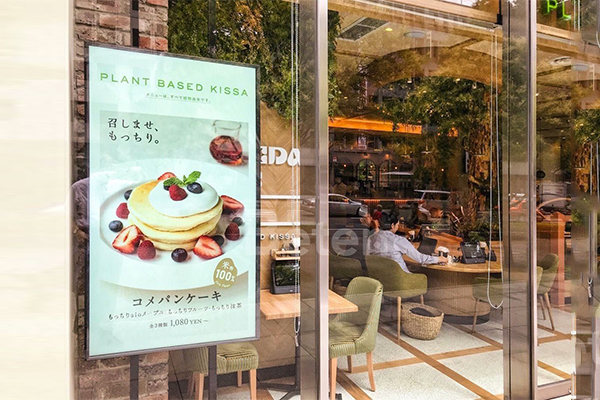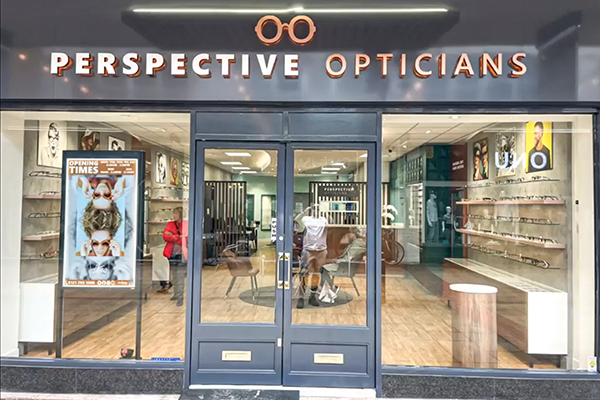In today's competitive retail landscape, the significance of a captivating storefront cannot be overstated. A crucial component of an alluring storefront is the retail window display. A carefully designed and executed retail window display has the power to captivate passersby, entice them into your store, and ultimately increase sales.

Section 1: The Basics of Retail Window Display
To create a visually stunning and engaging retail window display, it is essential to understand its basic components. These components include lighting and color scheme, props and decorations, and mannequins or products.
Lighting and Color Scheme:
Carefully chosen lighting can dramatically enhance the overall ambiance and visual impact of a retail window display. Utilizing spotlights, track lighting, or even LED strips can bring attention to specific areas or focal points within the display. The color scheme should align with your brand identity and evoke the desired emotions in potential customers.
Props and Decorations:
Props and decorations play a vital role in setting the scene and creating a compelling narrative within your retail window display. Whether it's seasonal elements, artistic installations, or thematic items, they should complement your products and enhance the overall visual appeal.
Mannequins or Products:
The inclusion of mannequins or actual products in your retail window display allows potential customers to envision themselves using or wearing the items. Thoughtful placement and arrangement of these elements can drive interest and facilitate a connection with your target audience.
Types of Retail Window Displays:
Retail window displays can be categorized into three main types: seasonal displays, product-focused displays, and lifestyle displays.
Seasonal Displays:
Seasonal displays capitalize on relevant holidays, events, or changing seasons to create an atmosphere that resonates with customers. Incorporating appropriate props, colors, and themes can ignite a sense of excitement and urgency, encouraging potential customers to explore your offerings.
Product-Focused Displays:
Product-focused displays place the spotlight directly on specific items or product lines. These displays highlight the features, benefits, and unique selling points of the showcased products, enticing customers to step inside and make a purchase.
Lifestyle Displays:
Lifestyle displays aim to depict a specific lifestyle and showcase how your products seamlessly fit into it. By creating a visually appealing narrative that resonates with your target audience's aspirations and desires, you can establish an emotional connection that drives them to explore your store further.
Section 2: Elements of an Effective Retail Window Display
Creating a Storytelling Experience:
To truly captivate potential customers, a retail window display should tell a compelling story. This story can be conveyed through carefully chosen elements and arrangements.
Choosing a Theme:
Selecting a theme for your retail window display provides a cohesive framework and narrative. This theme should align with your brand identity and resonate with your target audience.
Telling a Narrative:
Crafting a narrative within your display allows customers to connect with your products on a deeper level. It can evoke emotions, create intrigue, and encourage engagement.
Adding Emotion:
Emotion is a powerful tool in retail window display design. Incorporating elements that evoke joy, curiosity, or even nostalgia can leave a lasting impression on potential customers.
Incorporating Visual Hierarchy Principles:
Visual hierarchy principles guide the viewers' eyes through the display, highlighting key elements and directing attention.
Balance:
Achieving balance in a retail window display involves distributing visual weight evenly and harmoniously. This can be done through symmetrical or asymmetrical arrangements, depending on the desired effect.
Contrast:
Utilizing contrast draws attention to specific areas or items within the display. Contrasting colors, textures, or sizes can create visual interest and impact.
Focal Point:
Establishing a focal point ensures that the most critical element or message in your display captures immediate attention. This can be achieved through strategic placement, lighting, or unique props.
Unity:
Creating unity within your retail window display ensures that all elements work together cohesively. Consistency in theme, color scheme, and overall aesthetic reinforces brand identity and strengthens the desired message.
Highlighting the Brand Identity:
A successful retail window display should align with and reinforce your brand identity.
Brand Colors and Fonts:
Incorporating your brand's colors and fonts into the retail window display creates a visual connection and enhances brand recognition.
Brand Persona:
Reflecting your brand's personality and values in the display allows potential customers to identify with your brand on a deeper level.
Brand Message:
Your retail window display should convey your brand's message clearly and effectively. Whether it's promoting sustainability, innovation, or luxury, ensure that the message is communicated through the display.

Section 3: Techniques for Designing Retail Window Displays
Utilizing Textures and Patterns:
Adding textures and patterns to your retail window display enhances visual interest and adds depth.
Selecting Textiles and Fabrics:
Choosing textiles and fabrics that complement your products and overall theme can create a sensory experience and intrigue potential customers.
Applying Texture to Props:
Applying texture to props, such as rough surfaces or tactile materials, invites interaction and further engages viewers.
Playing with Scale and Proportion:
Experimenting with scale and proportion adds visual impact and creates a sense of intrigue within your retail window display.
Using Oversized Props:
Integrating oversized props captivates attention and creates a memorable visual experience.
Varying Product Sizes:
Displaying products in different sizes adds diversity and showcases various options available to customers.
Experimenting with Lighting:
Lighting is a powerful tool in setting the mood and enhancing the atmosphere of your retail window display.
Choosing the Right Lighting Equipment:
Selecting the appropriate lighting equipment ensures proper illumination and highlights key elements within the display.
Incorporating Light Effects:
Using light effects, such as spotlighting, shadows, or colored lighting, can evoke specific emotions and create a captivating visual experience.
Adding Motion and Animation:
Integrating motion and animation into your retail window display adds an element of surprise and dynamic engagement. This can be achieved through rotating displays, moving props, or interactive elements.
Section 4: Best Practices for Retail Window Display
Conducting Regular Maintenance:
To maintain the effectiveness of your retail window display, regular maintenance is essential.
Cleaning the Windows:
Clean and clear windows ensure optimal visibility and allow potential customers to fully appreciate your display.
Updating Displays Frequently:
Regularly updating your retail window displays keeps them fresh, relevant, and enticing. Stale or outdated displays may not capture the attention of passersby.
Ensuring Compliance with Codes:
Ensure that your retail window display complies with local codes and regulations regarding safety, accessibility, and signage.
Ensuring Accessibility for All Customers:
Designing your retail window display with accessibility in mind ensures that all customers can engage with and appreciate your offerings.
Designing for Individuals with Disabilities:
Consider the needs of individuals with disabilities, incorporating features like ramps, large-print signage, or braille descriptions when possible.
Creating Displays for Different Heights:
Avoid placing crucial elements of your display at inaccessible heights, catering to customers of different heights and ensuring everyone can enjoy the experience.
Measuring the Effectiveness of Retail Window Displays:
It is crucial to evaluate the impact and success of your retail window displays to continuously improve and refine your approach.
Collecting Customer Feedback:
Solicit feedback from customers to gain insights into their perceptions, likes, and dislikes regarding your retail window displays.
Tracking Sales Data:
Analyze sales data and observe any correlation between specific displays and increased sales. This information can guide future design decisions.
Analyzing Engagement Metrics:
Track engagement metrics, such as foot traffic, time spent observing the display, or social media buzz generated, to gauge the effectiveness of your retail window displays.
Conclusion
Transforming your storefront with a captivating retail window display is a powerful strategy for attracting and enticing potential customers. By incorporating thoughtful elements, storytelling techniques, and design principles, you can create a visually stunning and engaging experience that aligns with your brand identity. Remember to experiment with textures, lighting, and scale while adhering to best practices for maintenance and accessibility.
Now is the time to leverage the potential of retail window displays and elevate your store's appeal. Cooperate with Screenage, implement these ideas into your own business, and witness the impact they have on drawing customers through your doors.
Post time: Oct-09-2023





